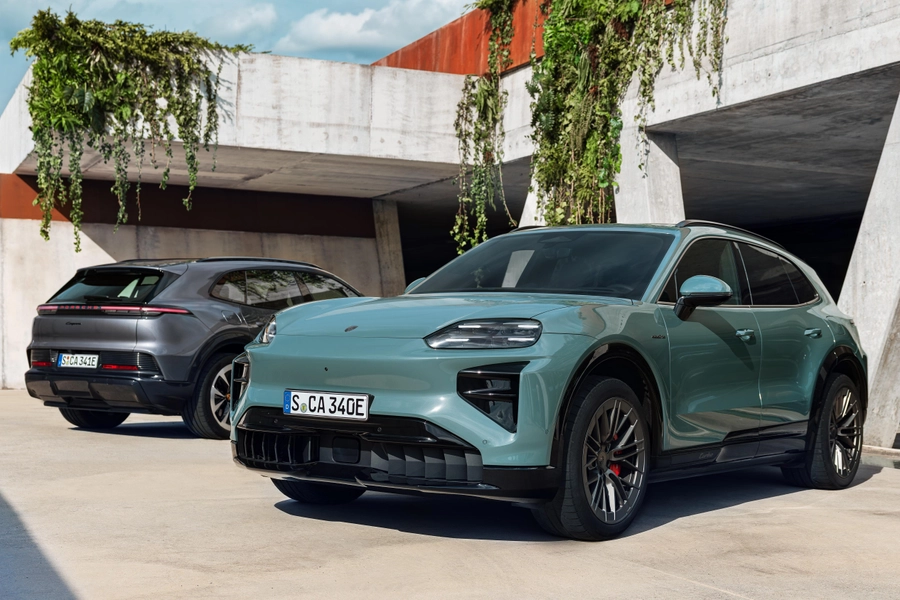The Porsche Cayenne Electric has been revealed globally and launched in India at the same time, marking a crucial step in Porsche’s transition toward high-performance electrification. India receives two variants: a base model priced at ₹1.75 crore (ex-showroom, before options) and a Turbo variant priced at ₹2.25 crore (ex-showroom, before optional extras). Customer deliveries for India are slated to begin in the first half of 2026. The Cayenne Electric will be sold alongside the existing ICE-powered Cayenne, ensuring customers continue to have both combustion and electric options.

Porsche Cayenne Electric – Exterior Design
The design of the Porsche Cayenne Electric stays familiar to the Cayenne silhouette but introduces EV-oriented updates. The overall footprint grows slightly, measuring 4,985 mm in length, 1,980 mm in width, and 1,674 mm in height. A wheelbase of 3,023 mm — around 13 cm longer than the ICE model increases cabin space and aims to improve rear comfort. The car is built on the Volkswagen PPE platform, which also underpins EV’s like the Audi Q6 e-tron and Porsche Macan Electric.
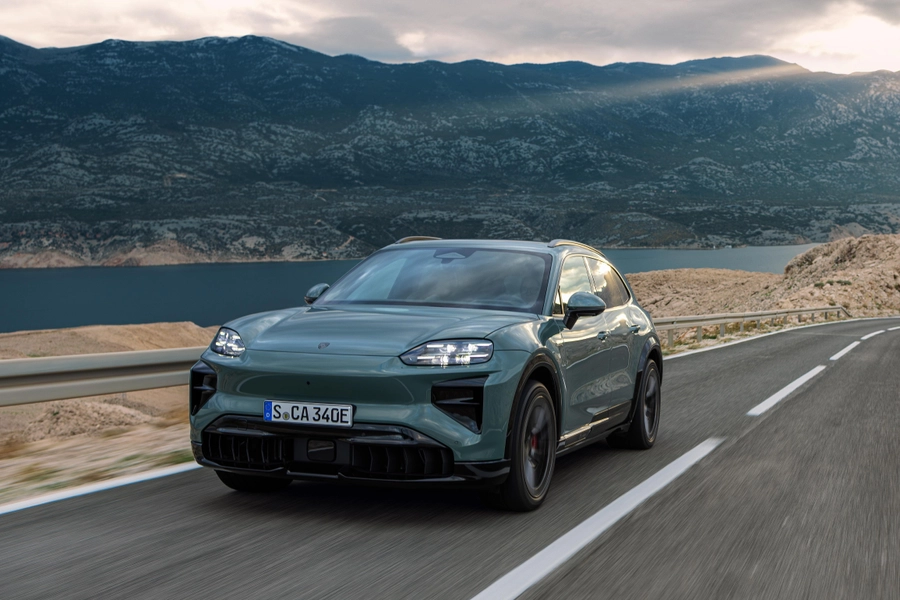
Externally, the SUV carries a clean design, a more aerodynamically sculpted front end, and slim Matrix LED headlamps. The broader stance and clean shoulder lines give the Cayenne Electric a planted appearance. Aerodynamic fine-tuning runs throughout the bodywork, including the integration of flush charging ports and airflow-optimised lower sections.
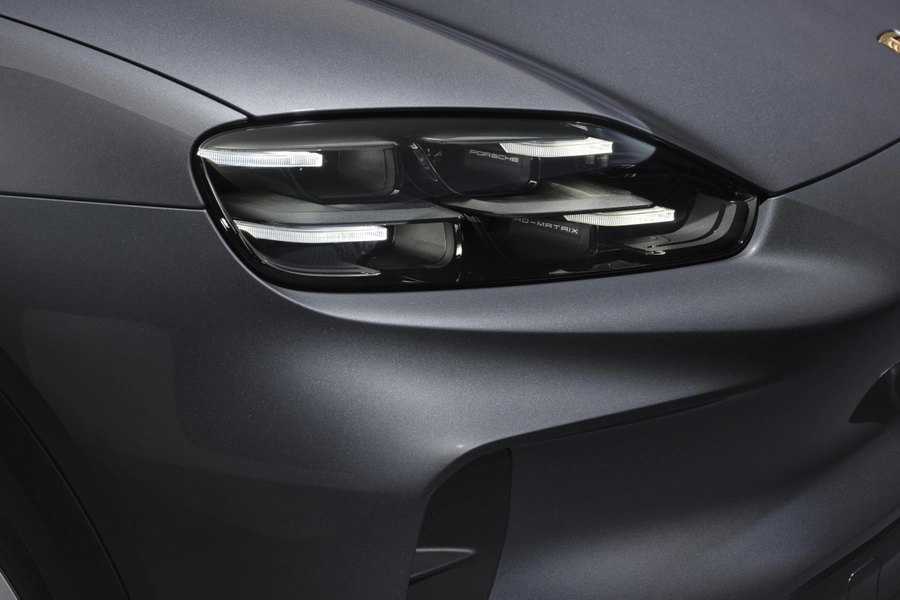
Porsche Cayenne Electric – Interior Design
Inside, the Porsche Cayenne Electric gets one of the most significant interior overhauls in Porsche’s recent history. The cabin is built around a new digital operating concept where the “Flow Display” seamlessly merges with the central interface. This curved OLED panel integrates with a 14.25-inch instrument cluster that presents power delivery, navigation, assistance-system alerts, and drive information with a clean, minimalistic layout.
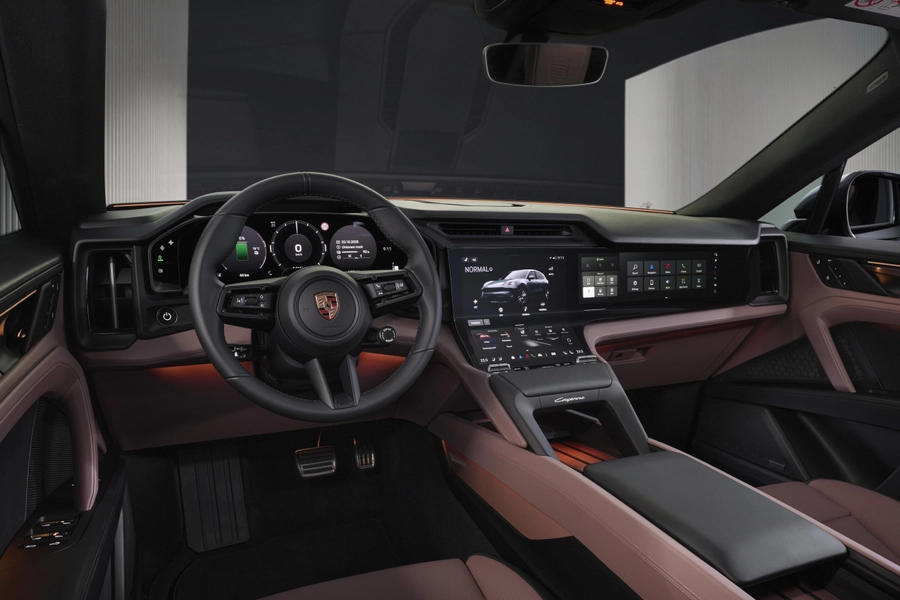
The front passenger can opt for a 14.9-inch dedicated display that enables video streaming and app control, safely partitioned from the driver’s field of vision. An additional highlight is the introduction of an augmented-reality head-up display. This AR HUD projects directional cues, lane guidance, and key driving data into what appears to be an 87-inch virtual display positioned ahead of the road, making navigational clarity one of its strongest interior features.
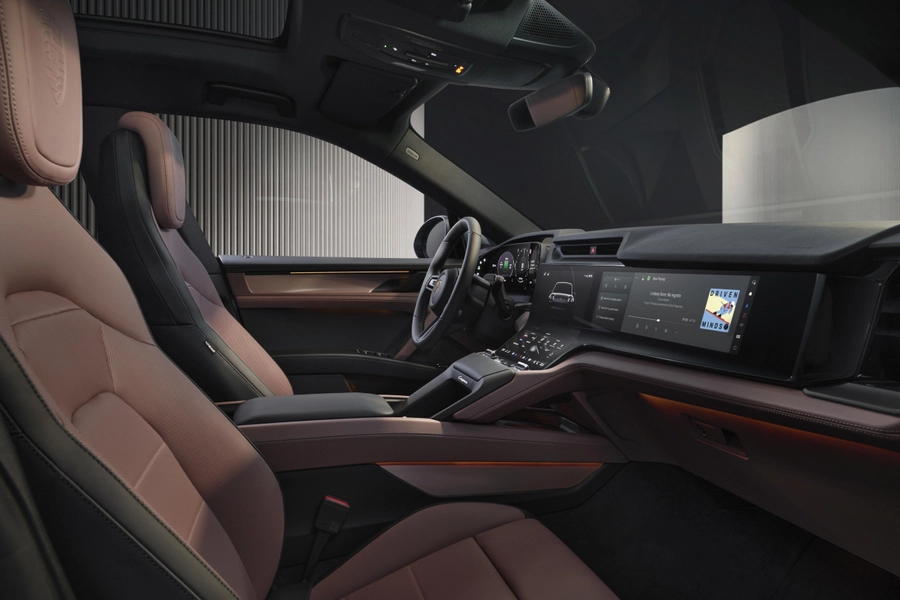
The cabin now includes new surface-heating elements embedded not only in the seats but also on major contact surfaces such as the armrests, door pads, and centre sections. This system provides uniform warmth more efficiently than conventional warm-air systems. Electrically adjustable rear seats come as standard, adding practicality for long-distance comfort as well as flexible cargo configurations.

A panoramic roof with electronically controlled variable transparency, allows the glass to switch between clear, semi-matte, or fully matte settings through liquid-crystal technology. Interior personalisation expands significantly, with 13 colour schemes, multiple material choices ranging from leather to Race-Tex, and new interior packages. Even the digital interfaces can be customised, with theme-based colour palettes applied across all screens.
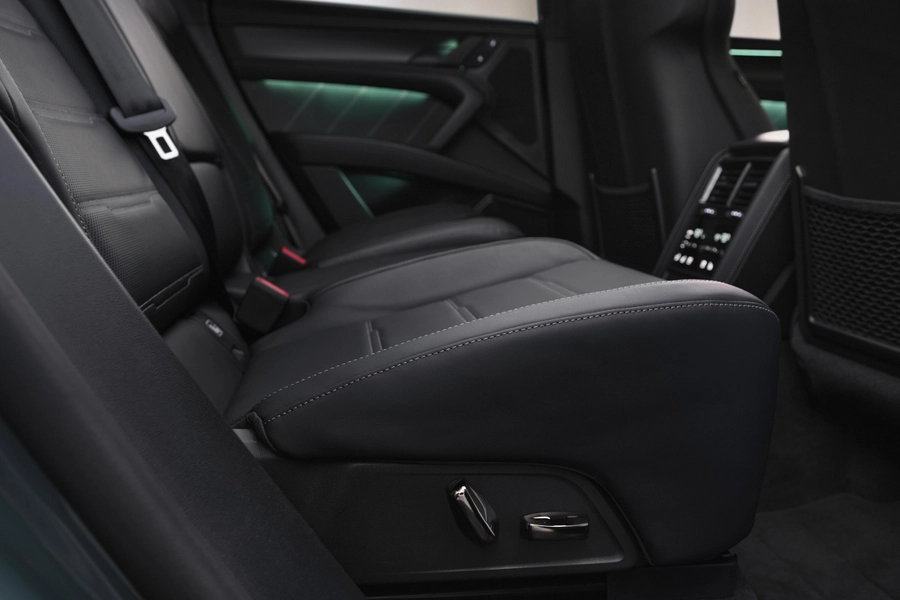
Additionally, the Porsche Cayenne Electric receives an updated voice-controlled assistant that understands natural commands and integrates with functions like climate, lighting, seat settings, and driving modes. A redesigned hand rest ensures the centre controls remain ergonomic even during dynamic driving.
Porsche Cayenne Electric – Power
The Porsche Cayenne Electric uses dual permanent-magnet synchronous motors, delivering all-wheel drive with Porsche’s characteristic rear-biased tuning. The Turbo variant reportedly produces more than 1,000 hp in overboost conditions and offers torque figures approaching 1,500 Nm. These outputs push the Cayenne Electric Turbo into near-supercar acceleration territory with a claimed 0–100 km/h time of around 2.5 seconds.
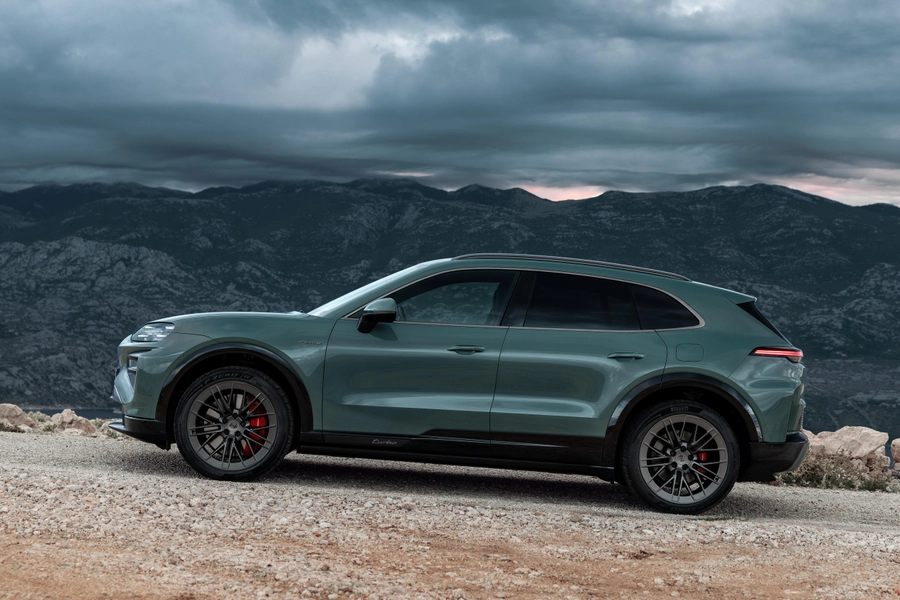
Despite such performance, Porsche claims the Cayenne is calibrated to maintain drivability and stability in varied conditions. The platform’s low centre of gravity, combined with active suspension and advanced torque distribution, aims to retain the Cayenne’s long-standing reputation for handling and dynamics.
Porsche Cayenne Electric – Battery Pack and Charging
A 113 kWh high-voltage battery (gross capacity) powers the Porsche Cayenne Electric, supported by a double-sided cooling system to stabilise thermal behaviour during high-demand driving or rapid charging. Built on an 800-volt electrical setup, the SUV supports DC fast charging up to 390 kW under normal conditions, and in controlled scenarios, it can reach as high as 400 kW.
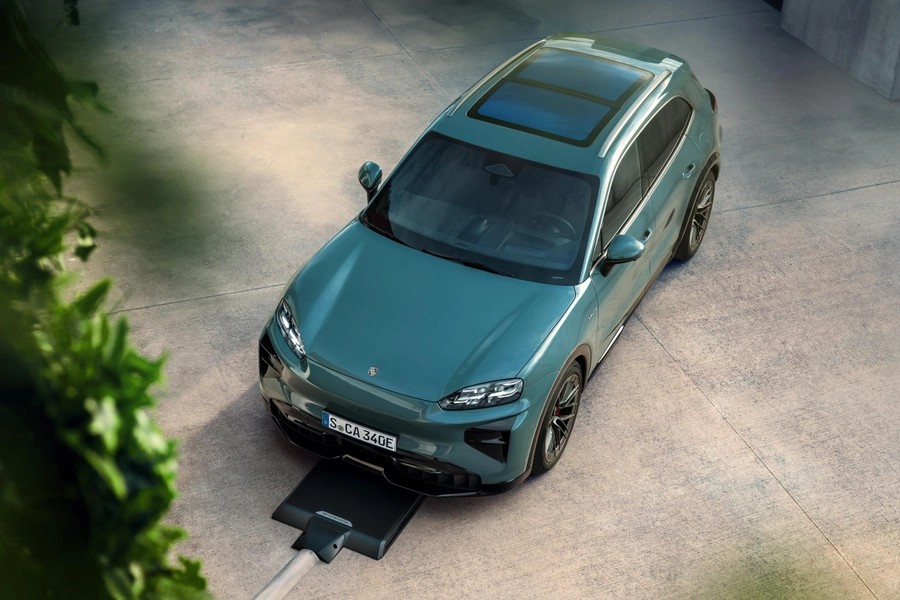
With optimal charging infrastructure, the Cayenne Electric can charge from 10 percent to 80 percent in under 16 minutes. At home, owners can opt for an inductive charging setup rated at 11 kW, allowing wireless charging simply by parking over a dedicated pad. Smart Charging Planner software monitors route planning, battery conditioning, and long-distance energy management to maximize efficiency.
Porsche Cayenne Electric – Market Positioning and Rivals
In global and Indian markets, the Porsche Cayenne Electric positions itself at the upper end of the luxury EV SUV segment. With a starting price of ₹1.75 crore and the Turbo variant at ₹2.25 crore, it competes with the most premium electric SUVs available today such as the Mercedes-Benz EQS SUV and even the BMW iX. Porsche has confirmed that the electric model does not replace the current ICE Cayenne; instead, it expands the lineup with a wider range of powertrains.

